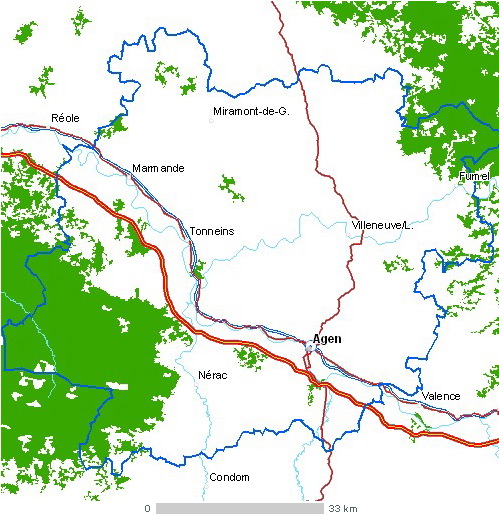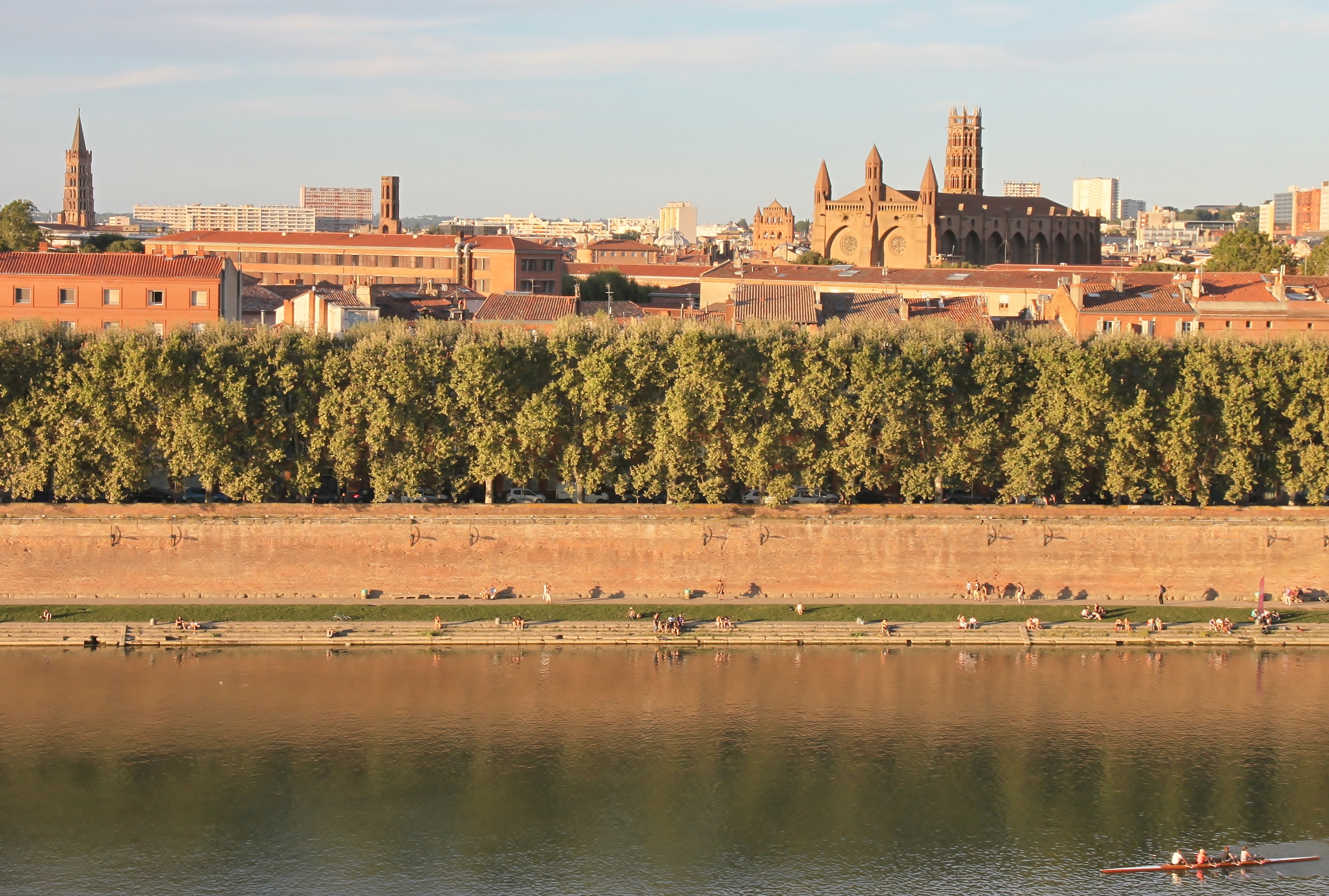|
Pomerol AOC
Pomerol () is a French wine-growing commune and ''Appellation d'origine contrôlée'' (AOC) within the Bordeaux wine regions#The Libournais appellations, Libournais ("Right Bank") in Bordeaux (wine), Bordeaux. The wine produced here is predominately from Merlot with Cabernet Franc playing a supporting role.Clive Coates ''An Encyclopedia of the Wines and Domaines of France'' pp. 110–115 University of California Press; First Printing edition (June 2001) Unlike most other Bordeaux communes, there is no real village of Pomerol, although there is a church. The houses are set among the vineyards.Stephen Brooks ''The Complete Bordeaux'' pp. 457–461 Mitchell Beazley (November, 2012) The region was recognized as a distinct wine region apart from Saint-Émilion and the greater Libournais region by the French government in 1923 and was granted AOC status in 1936 as part of the first wave of AOC establishments by the ''Institut national de l'origine et de la qualité'' (INAO). While it ... [...More Info...] [...Related Items...] OR: [Wikipedia] [Google] [Baidu] [Amazon] |
Château Pétrus
Pétrus is a Bordeaux, France, wine estate located in the Pomerol appellation near its eastern border to Saint-Émilion. A small estate of just , it produces a red wine entirely from Merlot grapes (since the end of 2010), and produces no second wine. The estate belongs to Jean-François Moueix and his children. Although the wines of Pomerol have never been classified, Pétrus is widely regarded as the outstanding wine of the appellation.Sutcliffe, Serena, (November 2, 2004)"Behind the Legend" Decanter.com.Coates, Clive (1995). ''Grands Vins''. University of California Press. pp. 448-453. Prial, Frank J. (September 26, 1990) ''The New York Times''.Faith, Nicholas (April 16, 2003)"Jean-Pierre Moueix" ''The Independent''. Pétrus leads a duo of Pomerol estates in extreme prices, along with Le Pin, that rank consistently among the world's most expensive wines. A 750 ml bottle of Pétrus wine is priced at an average of $4,112. History Originally, a vineyard, the estate ... [...More Info...] [...Related Items...] OR: [Wikipedia] [Google] [Baidu] [Amazon] |
Classified Growths
The Bordeaux Wine Official Classification of 1855 resulted from the 1855 Exposition Universelle de Paris, when Emperor Napoleon III requested a classification system for France's best Bordeaux wines that were to be on display for visitors from around the world. Brokers from the wine industry ranked the wines according to a château's reputation and trading price, which at that time was directly related to quality. The wines were ranked in importance from first to fifth growths ('' crus''). All of the red wines that made it on the list came from the Médoc region except for one: Château Haut-Brion from Graves. The white wines, then of much less importance than red wine, were limited to the sweet varieties of Sauternes and Barsac and were ranked only from superior first growth to second growth. Changes to the classification Within each category, the various châteaux are ranked in order of quality and only twice since the 1855 classification has there been a change: first wh ... [...More Info...] [...Related Items...] OR: [Wikipedia] [Google] [Baidu] [Amazon] |
Lot-et-Garonne
Lot-et-Garonne (, ) is a department in the Nouvelle-Aquitaine region of Southwestern France. Named after the rivers Lot and Garonne, it had a population of 331,271 in 2019.Populations légales 2019: 47 Lot-et-Garonne INSEE Its prefecture and largest city is Agen. History Lot-et-Garonne is one of the original 83 departments created on 4 March 1790, as a result of the French Revolution. It was created from part of the province of[...More Info...] [...Related Items...] OR: [Wikipedia] [Google] [Baidu] [Amazon] |
Tarn-et-Garonne
Tarn-et-Garonne (; ) is a Departments of France, department in the Occitania (administrative region), Occitania Regions of France, region in Southern France. It is traversed by the rivers Tarn (river), Tarn and Garonne, from which it takes its name. The area was originally part of the former Provinces of France, provinces of Quercy and Languedoc. The department was created in 1808 under Napoleon, with territory taken from the neighbouring Lot (department), Lot, Haute-Garonne, Lot-et-Garonne, Gers and Aveyron departments. The department is mostly rural with fertile agricultural land in the broad river valley, but there are hilly areas to the south, east and north. The departmental Prefectures in France, prefecture is Montauban; the sole Subprefectures in France, subprefecture is Castelsarrasin. In 2019, it had a population of 260,669. [...More Info...] [...Related Items...] OR: [Wikipedia] [Google] [Baidu] [Amazon] |
Garonne
The Garonne ( , ; Catalan language, Catalan, Basque language, Basque and , ; or ) is a river that flows in southwest France and northern Spain. It flows from the central Spanish Pyrenees to the Gironde estuary at the French port of Bordeaux – a length of , of which is in Spain (Val d'Aran);Le bassin versant de la Garonne Syndicat Mixte d'Études & d'Aménagement de la Garonne the total length extends to if one includes the Gironde estuary between the river and the sea. Its basin area is , which increases to if the Dordogne (river), Dordogne River, which flows from the east and joins the Garonne at Bec d'Ambès to form the Gironde estuary, is included. Umayyad and Duchy of Aquitaine , Aquitanian forces fought the Battle of the River Garonne in 732 beside the river near present-day ... [...More Info...] [...Related Items...] OR: [Wikipedia] [Google] [Baidu] [Amazon] |
Polyculture
In agriculture, polyculture is the practice of growing more than one crop species together in the same place at the same time, in contrast to monoculture, which had become the dominant approach in developed countries by 1950. Traditional examples include the intercropping of the Three Sisters (agriculture), Three Sisters, namely maize, beans, and Cucurbita, squashes, by indigenous peoples of Central and North America, the rice-fish systems of Asia, and the complex mixed cropping systems of Nigeria. Polyculture offers multiple advantages, including increasing total yield, as multiple crops can be harvested from the same land, along with reduced risk of crop failure. Resources are used more efficiently, requiring less inputs of fertilizers and pesticides, as interplanted crops suppress weeds, and legumes can Nitrogen fixation, fix nitrogen. The increased diversity tends to reduce losses from Pest control, pests and plant diseases, diseases. Polyculture can yield multiple harvests ... [...More Info...] [...Related Items...] OR: [Wikipedia] [Google] [Baidu] [Amazon] |
Latin
Latin ( or ) is a classical language belonging to the Italic languages, Italic branch of the Indo-European languages. Latin was originally spoken by the Latins (Italic tribe), Latins in Latium (now known as Lazio), the lower Tiber area around Rome, Italy. Through the expansion of the Roman Republic, it became the dominant language in the Italian Peninsula and subsequently throughout the Roman Empire. It has greatly influenced many languages, Latin influence in English, including English, having contributed List of Latin words with English derivatives, many words to the English lexicon, particularly after the Christianity in Anglo-Saxon England, Christianization of the Anglo-Saxons and the Norman Conquest. Latin Root (linguistics), roots appear frequently in the technical vocabulary used by fields such as theology, List of Latin and Greek words commonly used in systematic names, the sciences, List of medical roots, suffixes and prefixes, medicine, and List of Latin legal terms ... [...More Info...] [...Related Items...] OR: [Wikipedia] [Google] [Baidu] [Amazon] |
Romans (wine)
Ancient Rome played a pivotal role in the history of wine. The earliest influences on the viticulture of the Italian Peninsula can be traced to ancient Greeks and the Etruscans. The rise of the Roman Empire saw both technological advances in and burgeoning awareness of winemaking, which spread to all parts of the empire. Rome's influence has had a profound effect on the histories of today's major winemaking regions in France, Germany, Italy, Portugal and Spain. The Roman belief that wine was a daily necessity made the drink " democratic" and ubiquitous; in various qualities, it was available to slaves, peasants and aristocrats, men and women alike. To ensure the steady supply of wine to Roman soldiers and colonists, viticulture and wine production spread to every part of the empire. The economic opportunities presented by trading in wine drew merchants to do business with tribes native to Gaul and Germania, bringing Roman influences to these regions even before the arrival of t ... [...More Info...] [...Related Items...] OR: [Wikipedia] [Google] [Baidu] [Amazon] |
Viticulture
Viticulture (, "vine-growing"), viniculture (, "wine-growing"), or winegrowing is the cultivation and harvesting of grapes. It is a branch of the science of horticulture. While the native territory of ''Vitis vinifera'', the common grape vine, ranges from Western Europe to the Persian shores of the Caspian Sea, the vine has demonstrated high levels of adaptability to new environments, hence viticulture can be found on every continent except Antarctica. The duties of a viticulturist include monitoring and controlling pests and diseases, fertilizing, irrigation, canopy management, monitoring fruit development and characteristics, deciding when to harvest, and vine pruning during the winter months. Viticulturists are often intimately involved with winemakers, because vineyard management and the resulting grape characteristics provide the basis from which winemaking can begin. A great number of varieties are now approved in the European Union as true grapes for winegrowin ... [...More Info...] [...Related Items...] OR: [Wikipedia] [Google] [Baidu] [Amazon] |
Langue D'oc
Occitan (; ), also known by its native speakers as (; ), sometimes also referred to as Provençal, is a Romance language spoken in Southern France, Monaco, Italy's Occitan Valleys, as well as Spain's Val d'Aran in Catalonia; collectively, these regions are sometimes referred to as Occitania. It is also spoken in Calabria (Southern Italy) in a linguistic enclave of Cosenza area (mostly Guardia Piemontese) named Gardiol, which is also considered a separate Occitanic language. Some include Catalan as a dialect of Occitan, as the linguistic distance between this language and some Occitan dialects (such as the Gascon language) is similar to the distance between different Occitan dialects. Catalan was considered a dialect of Occitan until the end of the 19th century and still today remains its closest relative. Occitan is an official language of Catalonia, Spain, where a subdialect of Gascon known as Aranese is spoken (in the Val d'Aran). Since September 2010, the Parliament of Ca ... [...More Info...] [...Related Items...] OR: [Wikipedia] [Google] [Baidu] [Amazon] |
Langues D'oïl
The ''langues d'oïl'' are a dialect continuum that includes standard French and its closest relatives historically spoken in the northern half of France, southern Belgium, and the Channel Islands. They belong to the larger category of Gallo-Romance languages, which also include the historical languages of east-central France and western Switzerland, southern France, portions of northern Italy, the Val d'Aran in Spain, and under certain acceptations those of Catalonia. Linguists divide the Romance languages of France, and especially of Medieval France, into two main geographical subgroups: the ''langues d'oïl'' to the North, and the '' langues d'oc'' in the Southern half of France. Both groups are named after the word for "yes" in their recent ancestral languages. The most common modern ''langue d'oïl'' is standard French, in which the ancestral "oïl" has become . Terminology ''Langue d'oïl'' (in the singular), ''Oïl dialects'' and ''Oïl languages'' (in the plural) ... [...More Info...] [...Related Items...] OR: [Wikipedia] [Google] [Baidu] [Amazon] |









